 “While the U.S. military may not necessarily have to fight Russia or China, it is likely that U.S. forces through 2050 will encounter their advanced equipment, concepts, doctrine, and tactics in flashpoints or trouble spots around the globe..” — extracted from The Operational Environment and the Changing Character of Future Warfare
“While the U.S. military may not necessarily have to fight Russia or China, it is likely that U.S. forces through 2050 will encounter their advanced equipment, concepts, doctrine, and tactics in flashpoints or trouble spots around the globe..” — extracted from The Operational Environment and the Changing Character of Future Warfare
The Future Operational Environment’s Era of Contested Equality (i.e., 2035 through 2050) will be marked by significant breakthroughs in technology and convergences, resulting in revolutionary changes that challenge the very nature of warfare itself. No one actor is likely to have any long-term strategic or technological advantage during this period of enduring competition. Prevailing in this environment will depend on an ability to synchronize multi-domain capabilities against an artificial intelligence-enhanced adversary with an overarching capability to visualize and understand the battlespace at even greater ranges and velocities.
Ms. Elsa Kania, Adjunct Fellow, Technology and National Security Program, Center for a New American Security (CNAS), presented “People’s Liberation Army (PLA) Human-Machine Integration” at last month’s Bio Convergence and Soldier 2050 Conference. In this presentation, Ms. Kania addressed China’s on-going initiatives that seek to change military power paradigms via competition and innovation in a number of key technologies. This post summarizes Ms. Kania’s presentation.
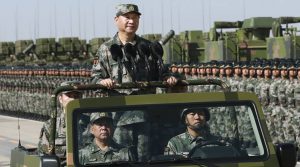
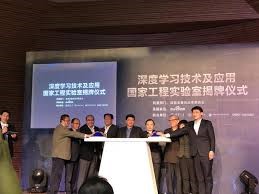 President Xi leads China’s Central Military-Civil Fusion Development Commission, whose priorities include intelligent unmanned systems, biology and cross-disciplinary technologies, and quantum S&T. Though the implementation of a “whole of nation” strategy, President Xi is leveraging private sector advances for military applications. This strategy includes the establishment of Joint Research Institutes to promote collaborative R&D; new national labs focused on achieving dual-use advances; and collaboration within national military-civil fusion innovation demonstration zones. Major projects concentrate on quantum communications and computing, brain science, and brain-inspired research.
President Xi leads China’s Central Military-Civil Fusion Development Commission, whose priorities include intelligent unmanned systems, biology and cross-disciplinary technologies, and quantum S&T. Though the implementation of a “whole of nation” strategy, President Xi is leveraging private sector advances for military applications. This strategy includes the establishment of Joint Research Institutes to promote collaborative R&D; new national labs focused on achieving dual-use advances; and collaboration within national military-civil fusion innovation demonstration zones. Major projects concentrate on quantum communications and computing, brain science, and brain-inspired research.
By 2030, China will be world’s premier Artificial Intelligence (AI) innovation center. Building upon their successes with Alpha Go, the PLA is seeking to establish a “Battlefield Singularity,” leveraging AI potential in planning, operational command and control, decision support tools, wargaming, and 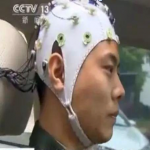 brain-computer interfaces controlling unmanned systems. They will deepen military-civil fusion AI initiatives with Baidu, Alibaba Group, Tencent, and iFLYTEK. AI is seen as a potential game-changer by the Chinese, a way to augment perceived military shortcomings.
brain-computer interfaces controlling unmanned systems. They will deepen military-civil fusion AI initiatives with Baidu, Alibaba Group, Tencent, and iFLYTEK. AI is seen as a potential game-changer by the Chinese, a way to augment perceived military shortcomings.
This focused initiative on innovation may result in China’s First Offset, characterized by integrating quantum satellites with fiber optic communication networks; human-machine interfaces; drone swarms able to target carrier task forces; naval rail guns; and quantum computing.
Potential areas for biotechnology and AI convergences include:
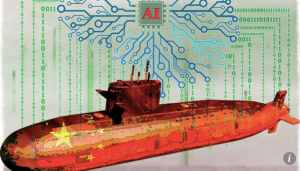 • “Intelligentized” Command Decision-Making: The Joint Staff Department of the Central Military Commission (CMC) has called for the PLA to leverage the “tremendous potential” of AI in planning, operational command, and decision support. Ongoing research is focusing on command automation and “intelligentization,” with experimental demonstrations of an “external brain” for commanders and decision support systems for fighter pilots and submarines.
• “Intelligentized” Command Decision-Making: The Joint Staff Department of the Central Military Commission (CMC) has called for the PLA to leverage the “tremendous potential” of AI in planning, operational command, and decision support. Ongoing research is focusing on command automation and “intelligentization,” with experimental demonstrations of an “external brain” for commanders and decision support systems for fighter pilots and submarines.
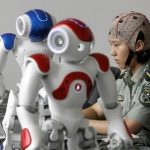 • Brain-Computer Interfaces: Active research programs in brain-computer interfaces are underway (e.g., at PLA Information Engineering University, Tsinghua University), enabling “brain control” of robotic and “unmanned” systems and potentially facilitating brain networking.
• Brain-Computer Interfaces: Active research programs in brain-computer interfaces are underway (e.g., at PLA Information Engineering University, Tsinghua University), enabling “brain control” of robotic and “unmanned” systems and potentially facilitating brain networking.
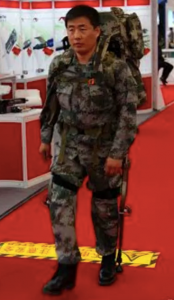 • Military Exoskeletons: Several prototype exoskeletons have been tested and demonstrated to date, augmenting soldiers’ physical capabilities, with the latest generations being more capable and closer to being fielded by the PLA.
• Military Exoskeletons: Several prototype exoskeletons have been tested and demonstrated to date, augmenting soldiers’ physical capabilities, with the latest generations being more capable and closer to being fielded by the PLA.
 • CRISPR in China: Gene editing is currently underway with animals and human embryos due to less stringent regulatory requirements in the PRC. BGI (a would-be “bio-Google”) is currently soliciting DNA from Chinese geniuses in an attempt to understand the genomic basis for intelligence.
• CRISPR in China: Gene editing is currently underway with animals and human embryos due to less stringent regulatory requirements in the PRC. BGI (a would-be “bio-Google”) is currently soliciting DNA from Chinese geniuses in an attempt to understand the genomic basis for intelligence.
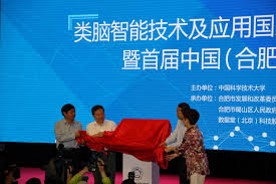 • Chinese Superintelligence: The Chinese aspire to develop “brain-like” or human-level AI. Their new National Engineering Laboratory for Brain-Inspired Intelligence Technologies and Applications, with Baidu involvement, is focusing on learning from the human brain to tackle AI, advancing next-generation AI technologies.
• Chinese Superintelligence: The Chinese aspire to develop “brain-like” or human-level AI. Their new National Engineering Laboratory for Brain-Inspired Intelligence Technologies and Applications, with Baidu involvement, is focusing on learning from the human brain to tackle AI, advancing next-generation AI technologies.
While technological advantage has been a key pillar of U.S. military power and national competitiveness, China is rapidly catching up. Future primacy in AI and biotech, likely integral in future warfare, could remain contested between the U.S. and China. The PLA will continue explore and invest in these key emerging technologies in their on-going drive for innovation dominance.
For more information regarding the PLA’s on-going innovation efforts:
Watch Ms. Kania’s video presentation and read the associated slides from the Bio Convergence and Soldier 2050 Conference.
Listen to Ms. Kania’s China’s Quest for Enhanced Military Technology podcast, hosted by our colleagues at Modern War Institute.
Read Ms. Kania’s “Battlefield Singularity Artificial Intelligence, Military Revolution, and China’s Future Military Power,” which can be downloaded here.
Check out Ms. Kania’s Battlefield Singularity website.


